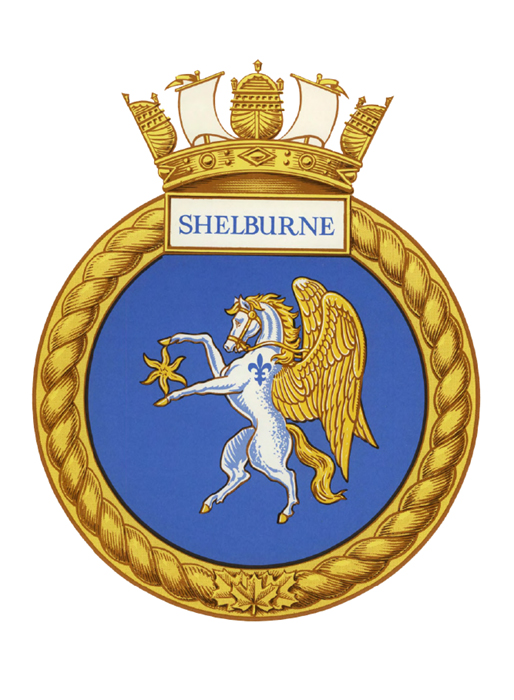HMCS Shelburne
There has been only one establishment named HMCS Shelburne in the Royal Canadian Navy.
HMCS Shelburne (Base)
During the Second World War, a naval repair base was established at Shelburne, Nova Scotia, where many allied ships were refitted and repaired following their valiant struggles on the Atlantic. One of the most important of the Royal Canadian Navy’s (RCN) east coast bases during the war years, it was the largest repair establishment manned entirely by naval personnel. The base refitted fighting ships to assure peak efficiency at sea, giving them a thorough re-conditioning from stem to stern, including installation of new types of secret equipment being developed at that time to meet the ever changing combat conditions. At one time, over 5 000 military personnel were stationed there. A Royal Canadian Air Force (RCAF) patrol squadron was also stationed nearby; as well, a submarine net was laid outside the harbour entrance.
It was at HMCS Shelburne that the first German submarine surrendered after the Second World War. In November 1945, following the end of the war, the base was jammed-packed with warships which had come to the end of their wartime service. More ships than at any time before crowded the jetty, and the trot buoys, either being, or waiting to be, destocked prior to their turnover to the War Assets Corporation.
The base was commissioned as Her Majesty’s Canadian Ship (HMCS) Shelburne, a fleet establishment of the Royal Canadian Navy, on 1 April 1955. Its first commanding Officer was also appointed Officer-in-Charge of the joint RCN/United States Navy (USN) Oceanographic Research Station, as HMCS Shelburne was manned by officers, men, and women of both the RCN and USN. On 1 November 1959, the RCN assumed all manning responsibilities.
Over the years, many changes took place at HMCS Shelburne including the replacement of the original Quonset Huts and the Second World War harbour defence emplacement. During the Cold War, HMCS Shelburne was also involved with the Integrated Undersea Surveillance System (IUSS). IUSS was comprised of fixed, mobile, and deployable acoustic arrays that provide vital tactical information to anti-submarine warfare (ASW) forces. IUSS provided the navy with its primary means of submarine detection, both nuclear and diesel.
With the integration of the RCN into the Canadian Forces (CF), HMCS Shelburne was paid off on 10 August 1967 and the station became the Canadian Forces Station (CFS) Shelburne. The station continued her important IUSS role until closed on 1 August 1994.
Motto: Serving in Silence
